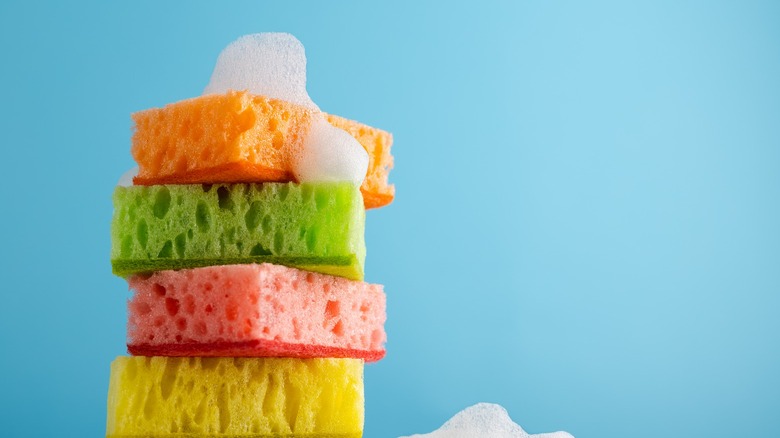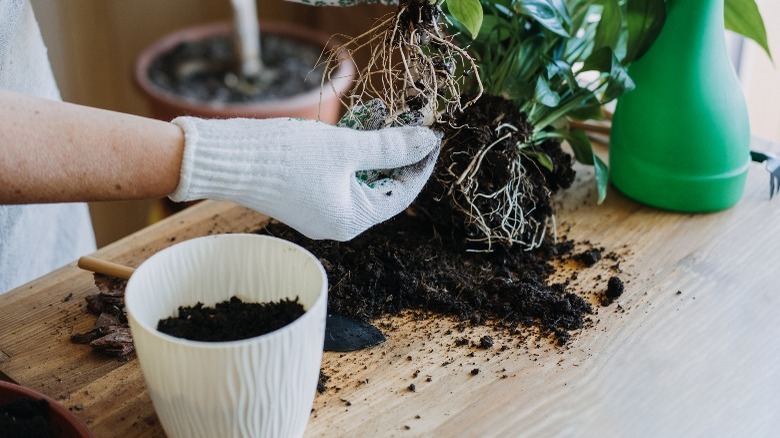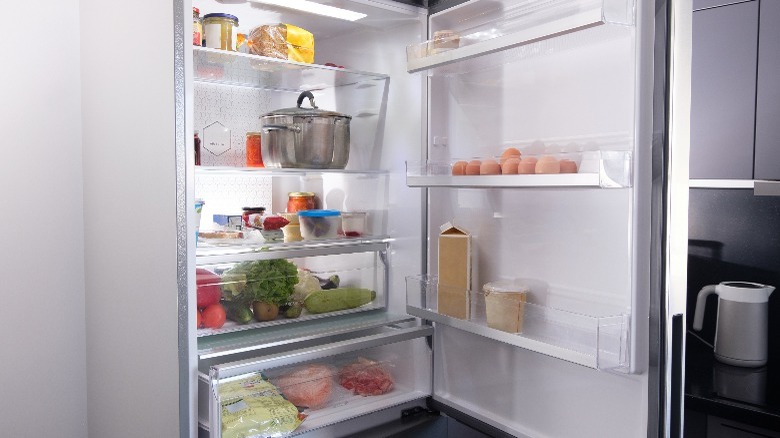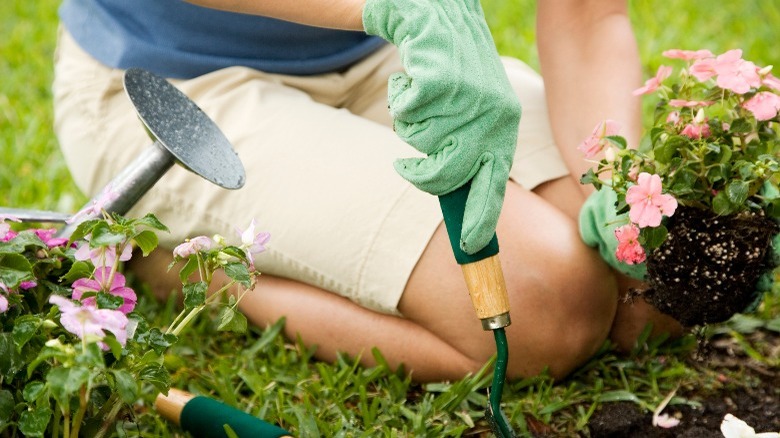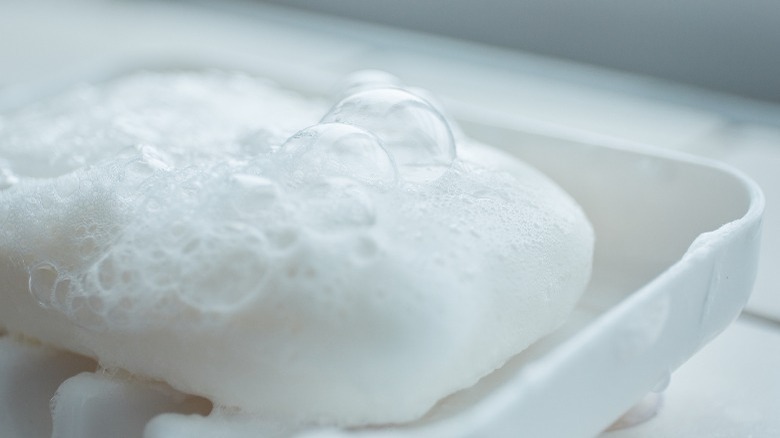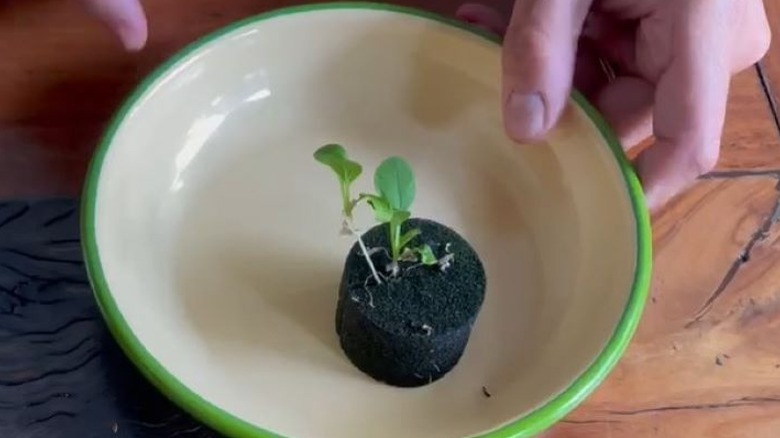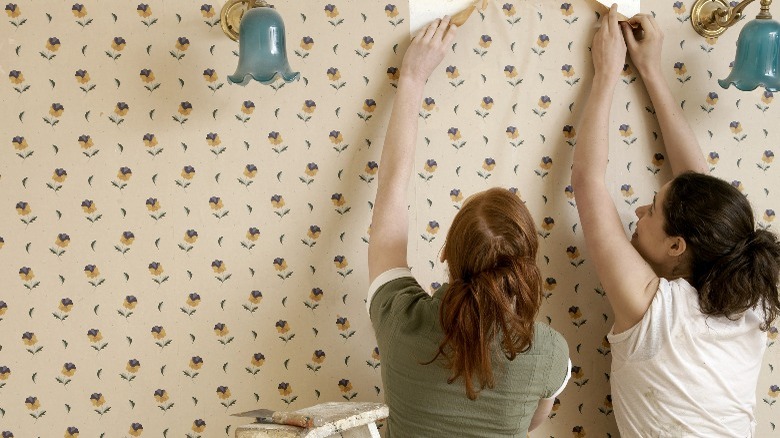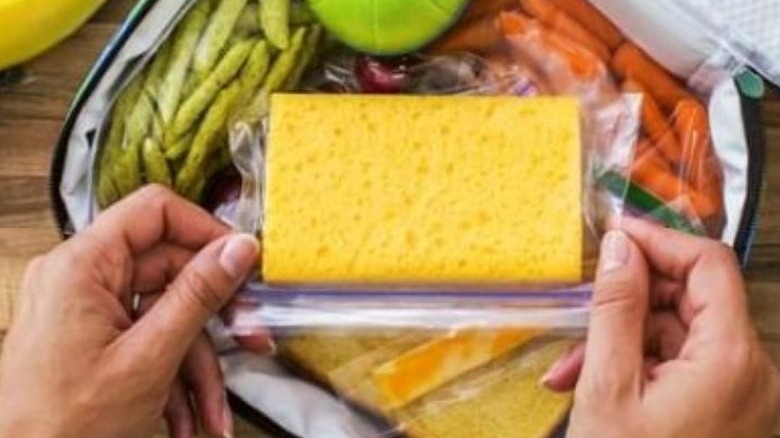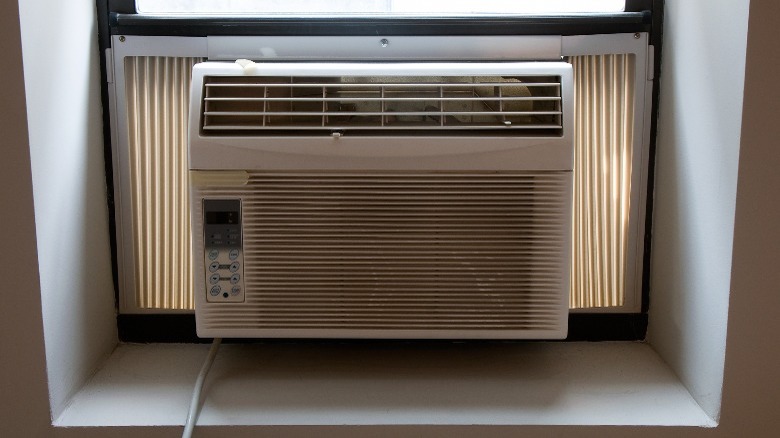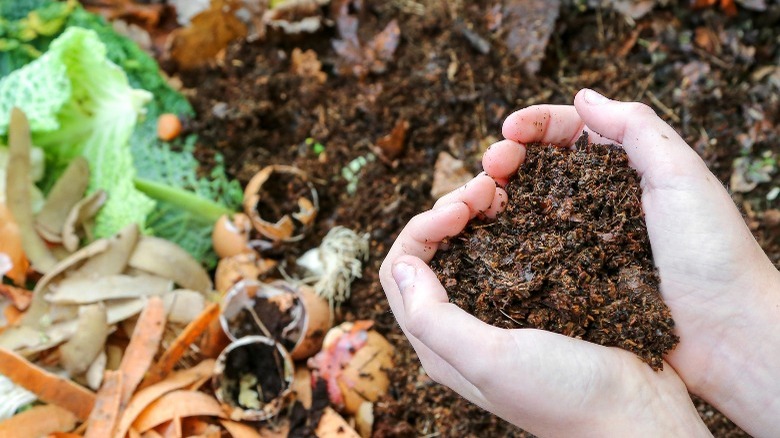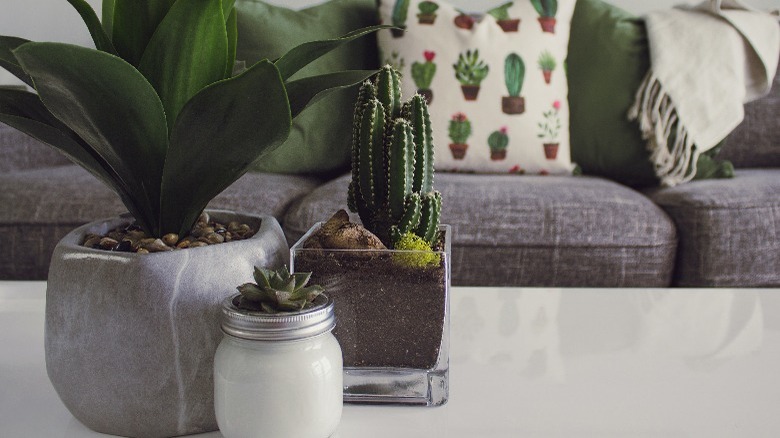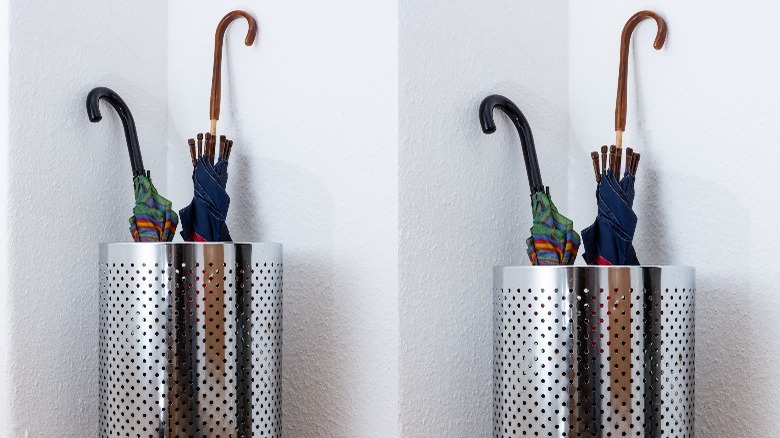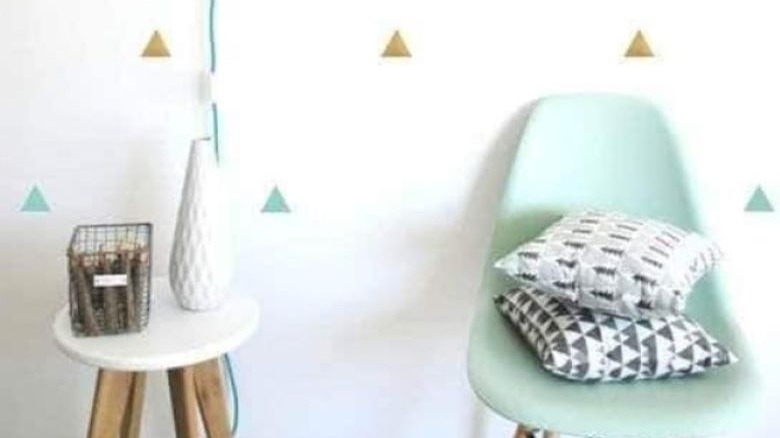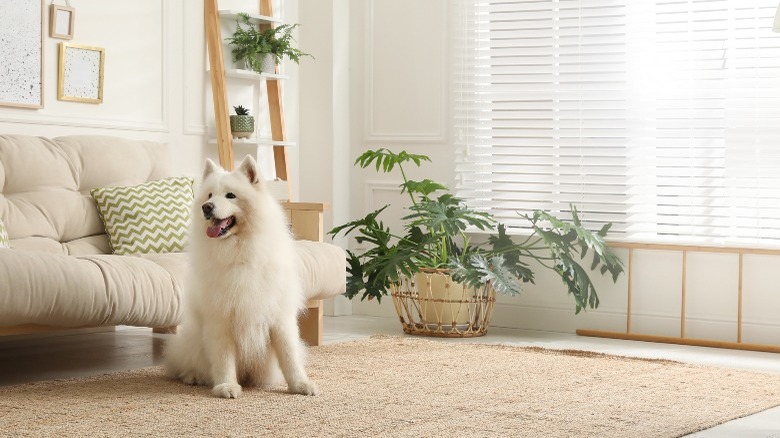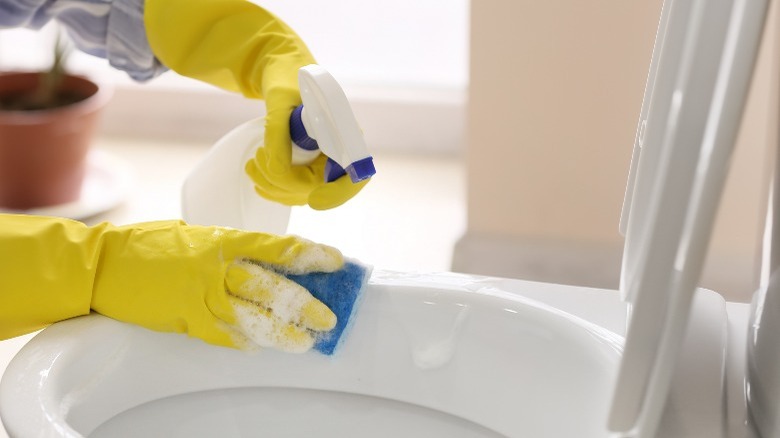Creative Uses For Kitchen Sponges Around The House
Kitchen sponges are mostly used to do the dishes and wipe up countertops. They also come in handy for scrubbing things like car exteriors and dirty sneakers. But these hand-sized, squishy cleaning aids can be used in creative ways that don't focus exclusively on cleaning. Sponges absorb water because they are full of space that can be compared to open bubbles. And unless it is saturated and leaking, the liquid won't be released unless the sponge is squeezed. Otherwise, sponges dry out after the water evaporates.
You've likely noticed that dry sponges take longer to absorb water than damp ones, and that's because water is actually sticky and will more readily attach to more water that's already there.
A sponge's ability to absorb liquid is the main reason why they are so versatile. Kitchen sponges are usually made from cellulose, nylon, plastic, or microfiber. Certain sponges are better suited to different tasks: For example, thin ones won't provide cushioning. But whichever type of sponge is chosen, recycled ones should be sanitized first to prevent the spread of germs. The easiest way to do this is to dampen it and place it in the microwave for two minutes. Give it time to cool down before squeezing it out – the sponge will be very hot.
Keep houseplants from drying out
When houseplants die, the cause might be under or overwatering. Too much water can cause yellowing or root rot but without enough water, plants won't thrive and can turn brown and perish. It's important to plant them in pots with drainage holes, but sometimes that isn't enough to keep the soil properly aerated.
To boost a houseplant's chances of survival, add a few cut-up sponges into the pot before adding the soil. Add that and the plant on top, and pour in enough water to moisten the soil without saturating it. The hidden sponge pieces will absorb excess water and this allows the roots to get enough oxygen without drowning. And that's not all – the sponges will gradually release water into the soil to help balance the moisture level. This is a creative way to water houseplants, and, as a bonus, they won't need to be watered as often.
Make the fridge smell nicer
Baking soda naturally absorbs smells and it works through a simple chemical reaction: Bad-smelling things are generally acidic and baking soda neutralizes pH. So an opened box of baking soda in the back of a refrigerator absorbs acidic odors coming from fish, cheese, garlic, and onions. Those open boxes are found in countless homes around the world but it leads to a heck of a lot of wasted baking soda.
There's an easy way around that when a sponge comes into the mix. Instead of sacrificing an entire box of baking soda, cover a sponge with about a tablespoon of that white powder; another option is to cut the sponge into pieces and toss it with baking soda. Place it in a container and stick it in the back of the fridge. Don't put the sponge on a plate because the baking soda could spill onto the refrigerator shelf. Instead, put it in a bowl or container with higher sides.
Give your knees some love
Anyone who has spent time kneeling when weeding or cleaning knows how hard these chores can be on the knees. The constant pressure causes considerable strain and can lead to serious knee problems like osteoarthritis and bursitis. Stretching and ice can alleviate the pain, but preventative measures can keep the issue from developing.
Knee supports sold by pharmacies and other retail outlets can help, but they can be cumbersome and make the skin sweat. An easier, less expensive alternative is DIY sponge knee supporters. These can be placed on the floor beneath the knees and can stay there until the work is finished. If the task requires frequent getting up and kneeling down, tie the sponges to the front of your knees with an old scarf or compression wrap. The sponges can be slightly damp or dry. Hey, it might look goofy, but it works.
Make soap last longer
Soap dishes serve an important purpose but used bars of soap can have nasty scum all over them. This means that they have to be scraped clean and washed off frequently, adding to your list of weekly chores. Bars of soap left in soap dishes also have shorter lives because they literally just drip away. Soap dishes with drain holes can be neater, but there is still waste. And while some are attractive to look at, most are poorly designed because of residue accumulation.
A bit of absorbency is what's needed and the solution is pretty obvious. A strategically-placed, sanitized sponge on the bottom of the dish will absorb the excess, damp residue and the soap will dry out in no time. It will also last longer, and won't need to be rinsed off as much before it's used. Look for sponges that match the soap dish. Or, if that's too much bother, don't even use the dish – just let the soap rest on the sponge and bring out the soap dish when guests are visiting.
Create a mini greenhouse for seeds
A sponge's absorbency can also benefit plant seeds by encouraging moisture retention which helps with germination. It can be incorporated into a miniature greenhouse that gets put together in under a minute. Take a small plate and put a dampened sponge right on top. Cover the sponge surface with seeds, leaving enough space between each seed so the seedlings don't become overcrowded. No watering is required at this point since the sponge is damp. Cover the seeded sponge with a glass bowl and put the little greenhouse in a sunny location.
The best thing about growing seeds in sponges is not having to use dirt but there are other benefits, too. Seeds germinate quickly in sponges and a lot of them can be planted in just one sponge. This can also be a very cool science experiment for kids, and they can help transplant the seedlings into pots or gardens when the seedlings are ready.
Loosen up the wallpaper
Removing wallpaper is a dreaded task and with good reason. Although strippable and untreated/uncoated versions are easier to take down, wallpaper with laminated or vinyl coatings can be extremely stubborn. The last kind is usually washable, so water can't permeate it. But devoting an entire weekend to this unpleasant task or hiring a professional might not be necessary when sponges and a few other items are on hand.
Large sponges are best for loosening up wallpaper because they can cover more surface area in one swoop. Grab a few large sponges, a bottle of fabric softener, and a bucket. Mix equal parts of the softener and hot water and drop in the sponges. Wearing protective gloves, squeeze out the excess and wipe the sponges over the wallpaper. The softener will weaken the wallpaper glue and soon enough, the covering will be loose enough to pull off without as much effort.
Make inexpensive, effective ice packs
People reach for ice packs often, to soothe sore muscles and keep food and drinks cold. These blue wonders certainly do the job but there are downsides. First of all, they start to sweat when they warm up, and that means messy, dripping water. The larger ice packs can also be heavy and take up a lot of space in coolers. And when they're brought home, ice packs need to sit out and dry before being used again. That can take a few hours or more.
Kitchen sponges can be even better than ice packs because they don't drip water, aren't heavy, and aren't cumbersome. To turn one into a homemade ice pack, saturate a sponge in water and squeeze out the excess. It should be fairly wet, with some water left in it. Put it into a sealed plastic bag and stick it in the freezer. These are especially good for sore muscles and strains because they become more flexible as they warm up.
Seal envelopes
Even though many people pay bills online and only use email invitations, envelopes haven't become obsolete yet. Paper birthday and other special occasion cards can seem more meaningful and come with coordinating envelopes, and stores still have racks of them available for interested customers. And guests still appreciate receiving mailed invitations for events, especially when there's an included RSVP card and a stamped return envelope.
There are self-sealing envelopes that don't have to be licked, but all the others have that sticky, icky gum on the tops of the insides. It's usually made from acacia tree sap and formed into a product called gum arabic. Although it isn't harmful and shouldn't upset the stomach, the nasty taste is very off-putting. To save the tastebuds, cut a sponge into small pieces and place it in a shallow container. Add a small amount of water, dip in the piece, and run it along the gum arabic. Just a little bit of water is all that's needed to get through a large number of envelopes and your tongue will thank you for the favor.
Keep drafts out
Drafts are more likely to get noticed when it's cold outside and can cause real problems indoors. Aside from making the house uncomfortable, the HVAC system will turn on too often and drive up energy costs. Pollen and other airborne allergens can also make their way inside, and no one likes to deal with stuffy noses, itchy eyes, and other allergy symptoms. Drafts can also allow moisture to seep in.
All homes have air leaks that develop over time. Buildings shift and settle, causing open gaps, widened seams, and noticeable cracks. The most common locations for these are window frames, doors, around air conditioner units, and pipes. And repairing them can cost an arm and a leg.
Serious drafts can require extensive repairs, but smaller ones can be plugged up with sponges. Cut the sponge down or use a utility knife to slice out slim pieces to fit into cracks. If the slivers can't be cut down small enough to plug an opening, push them on top and cover them with plumber's tape. And if an air conditioning unit doesn't fit snugly enough into a window, line the gaps with dampened sponges, which will conform to the space as they dry.
Add old sponges to compost bins
Compost bins can hold a wide variety of things and believe it or not, certain sponges can be donated to the cause. The most common kinds sold in grocery stores contain polyurethane, which is a petroleum-based product. These sponges cannot be composted or recycled and should be tossed in the trash when their useful lives are over.
Cellulose sponges, on the other hand, can be added to compost bins. Instead of petroleum, they're made from cotton fiber, wood pulp, and other materials that break down. When shopping, seek out cellulose sponges if you have a composting bin. And if the package notes that it's biodegradable, that's even better. This is an easy hack – just cut them up into small pieces and add them to the heap. This way, they'll disintegrate even faster. But don't feel bad about not being able to compost any other sponges. There are plenty of ways to recycle them in the home, including the four additional suggestions below.
Protect furniture
Finding a new planter or another awesome tchotchke at HomeGoods can make someone's day. But the rush to put it out for display increases the possibility of damaging the new item or the furniture it gets placed on. Cut-up sponges can fill in for furniture protectors as long as there's a pair of scissors and glue handy.
To make these, turn the new item upside down to see where the sponge protectors should go. A measuring tape might be needed for larger items, or just do it by eyeing the surface. Cut a dry sponge into the shapes with a utility knife. Once that part's finished, place them under the item and make sure it doesn't wobble. If it does, shave off some of the sponge. Once the fit is right, attach the sponge pieces with a strong adhesive like Gorilla Glue. Your furniture will remain in pristine condition, without any scratches.
Keep breakables unbroken
Thicker sponges work best for this hack and more than one is usually needed. Damp, squeezed-out sponges can protect small, fragile valuables from damage, and this can be a huge help when packing and shipping things. The only word of caution here is to avoid using them on things that cannot get damp, like metal jewelry – it could cause them to rust.
For other breakables, get a damp sponge and a rubber band. Place the item in the middle of the sponge, fold it up, and secure it with a strong rubber band – use more than one sponge for larger items. As the dampness evaporates, the inside of the sponge will conform to the shape of the object cushioned within. Genius!
Line the bottoms of umbrella stands
Umbrella stands protect floors, rugs, and carpets from dripping umbrellas, but the narrow interiors can take a while to dry out. This turns them into breeding grounds for mold and bacteria and unfortunately, most homeowners probably never even think about it until they notice the smell. And when that happens, the whole thing might need a deep cleaning and that isn't easy. Ever try to get down into the bottom of one of those things?
Sponges can prevent that moldiness and smelliness when used as a preventative measure. They can be cut into small pieces and tossed down into the bottom of the stand. Add enough to create a soft cushion that isn't too tall (so the umbrellas don't stick up too high). But if the opening is wide enough, feel free to drop a whole sponge in. That will be easier to remove when it's ready to be switched out for a new one.
Get into sponge painting
Sponges have long been used for craft painting projects but this kind of art isn't only for kids. They can be cut into adult-friendly shapes too, and serve as stampers for painted floors, walls, cabinets, and furniture. And instead of hearts and stars, the sponges can be used to imprint chevrons, thick, short lines, leaves, and other modern shapes.
Draw the shapes on dry sponges and cut them out with a utility knife. You'll need several cutouts of each shape, especially for larger projects. Experiment with different colors and patterns on cardboard and measure out the space when ready if you want straighter lines. The sponge doesn't have to be dipped in the paint for each imprint, since a mix of fading can look interesting. Anyone with a steady hand, a good eye, and a bit of creativity can create a lovely accent wall in about an hour. And if it doesn't come out right the first time, just paint over it and try again.
Tackle lint and pet hair
The ongoing battle to eliminate lint and pet hair never ends, and most people don't have time to vacuum every day. Pet hair is more of a problem for pet owners because it sticks to practically everything. It is made up of keratin and proteins and both pick up electrical charges. So when positively-charged pet hair makes contact with negatively-charged fibers on couches, clothing, and other fabrics, those get charged too, and the hair sticks. It's all about static electricity and boy, is it annoying.
Lint also sticks to fabrics for the same reason as pet hair, and both can be spot-removed with slightly dampened sponges. The key is not to get the fabric wet, especially when it is delicate. If you aren't sure, read the fabric label or use another method. The sponge's moistness will make the hair or lint clump together and it can be picked off. This can also be done before vacuuming for better results.
Save old sponges for dirty work
One never knows when a sponge could be needed so it makes sense to have extra ones handy. In addition to keeping new ones in the kitchen, sanitize old sponges and store them in other rooms. These are practical for cleaning bathrooms, cars, lawnmowers, bicycles, and other places and things that get greasy or unsanitary.
The only issue here is the potential for mixing these sponges up. Cleaning kitchen utensils with a sponge that previously cleaned a bathroom floor is a deal breaker, but that can be prevented. Aside from keeping the dirty work sponges in another room, cut off a piece from a corner or the side. This will make it easy to differentiate between those and cleaner kitchen sponges. Dirty sponges might not get used as often, so it's important to clean them now and then. But instead of putting them in the microwave, soak them in bleach diluted in hot, soapy water.
